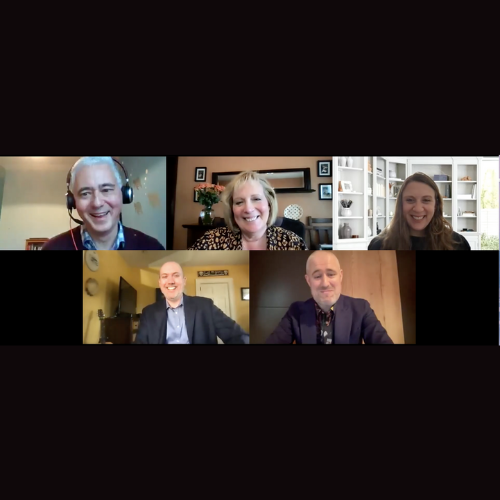
Propeller Group welcomed guests from both sides of the Atlantic to a virtual edition of its Wallflowers at the Orgy series recently – a panel at which the tables are turned and senior journalists are given a grilling about what factors dictate their editorial choices.
This edition of Wallflowers had a specific US focus and the panelists included Judy Pollack, Executive Editor at AdAge, Kenneth Hein, US Editor at The Drum and Alison Weissbrot, US Editor at Campaign. Propeller’s own Director of Content and former trade journalist Branwell Johnson chaired the panel and the topics ranged from the role of the press and the value of news to the relationship between editorial and commercial and the bugbears that agency comms and PR teams need to understand if they want to pitch stories successfully.
If you’re wondering what the Wallflowers title refers to, renowned US writer and novelist Nora Ephron was once quoted as saying: “Working as a journalist is exactly like being the wallflower at the orgy…everyone else is having a marvellous time, laughing merrily, eating, drinking, having sex in the back room, and I am standing on the side taking notes.”
Watch the Wallflowers video here.
10 top tips that will build a better relationship with journalists:
“We don’t care that your client wants to be in the publication, we want to write something our readers want to know. So keep that in mind when pitching and organising information that you send.”
Alison Weissbrot, US Editor, Campaign
- If you are a PR that thinks offering a ‘trade exclusive’ has value be careful – the panel was in agreement that this doesn’t mean exclusive at all. Exclusive means they are the only people to receive it, trade or consumer. As Ken explained, “we’d prefer it if you say you are being selective – that’s transparent. But exclusive means exclusive.”
- Being first is still important. All were in agreement that they want to provide stories first and being the second or third title to run something offers little value to both them as journalists or to their readers. But that doesn’t mean they don’t want to know about the story – if you are honest in who else receives it, they may still run it within a trends piece or wider feature, if the information is of interest.
- “Brevity is key,” stresses Ken. Journalists want to know quite quickly and clearly what is interesting, what they need to know about it and why. Context in a formal release is important, but it’s okay for the pitch to be colloquial in its explanation on why it should be covered. “Cutting to the point up top is what is helpful – our emails are exploding so we scan. It needs to catch our attention and show you know our publication and can see where it can fit”, he said.
- Don’t go round the houses of the editorial desk. Learn who the appropriate reporter is for a pitch and don’t pitch it to their colleagues when they have already turned it down.
- Profiles of people are still important if they contain “an honest and relevant conversation.” The editors said they were keen to profile more diverse faces and voices to show how the industry is changing in a positive way and new faces were likely to attract their attention. “Often we get offered a CEO but we also like to talk to people we haven’t discovered before, particularly up-and-comers and people of colour – they need to be reflected more,” said Judy.
- Guest columns have high barriers to entry and editors receive dozens of pitches every day. PRs need to cut to the chase and advise a PR to pick one point and really pursue it as a piece of thought leadership rather than scatter a bunch of random but related thoughts down. And don’t spend too much time on the scene-setting. Ensure that there is a new point of view that is different to what has already been covered.
- Checking in to see how your pitch is progressing is acceptable once. “After two times with no progression, assume it’s a no” .
- Don’t Expect feedback but don’t take it personally. The panel stressed while they would love to give feedback they are slimly resourced and often don’t have the time. Ken says: “Remember we are trying to manage our workload too. A follow up is a good idea because things do get lost and overlooked, but if we say no don’t start asking why – trust our decision.”
- Email is the best contact channel. Alison stresses: “If someone I have a relationship with has my number and wants me to know about a piece of news that’s okay. But don’t call or text me if we have never spoken.”
- Relationship building is tough during the pandemic but the journalists do make time for those informal Zoom chats without a set agenda to share ideas on how we can work together. Ken adds: “Bring us a good story and make something worth our time. That makes a great connection. If you annoy us, try again as news cures all ills – we appreciate it if you put the work in.”
“An editor’s job is to curate. We have to weigh up whether it’s important enough for our readership – it’s great it’s exclusive but we may not want it – we have limited resources so we need to decide what is really important for us to pursue.”
Judy Pollack, Executive Editor, Ad Age